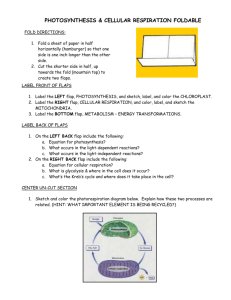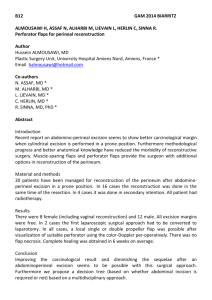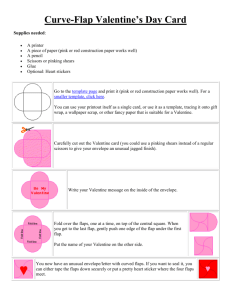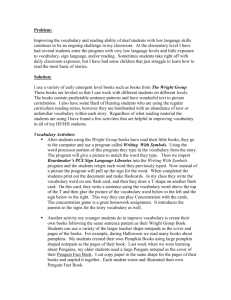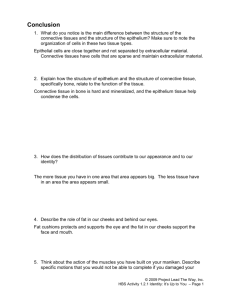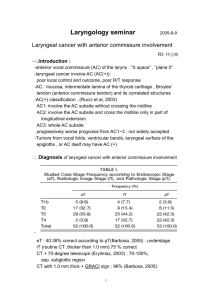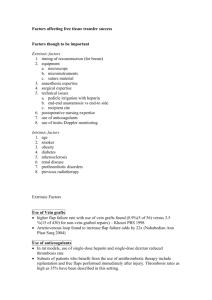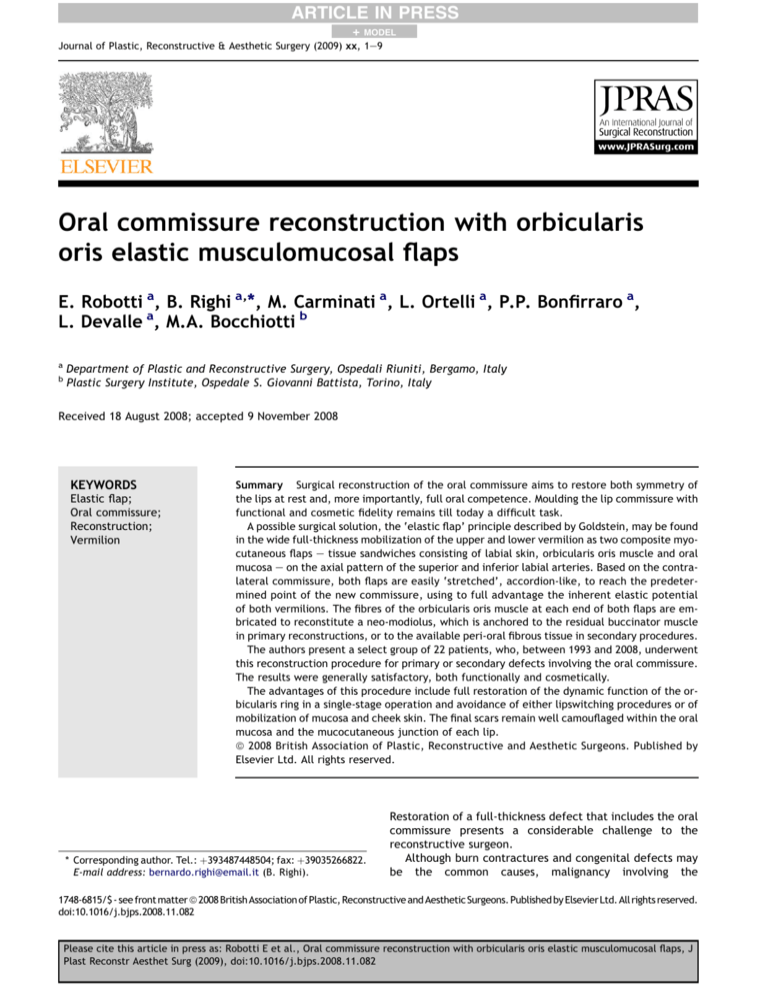
ARTICLE IN PRESS
+
MODEL
Journal of Plastic, Reconstructive & Aesthetic Surgery (2009) xx, 1e9
Oral commissure reconstruction with orbicularis
oris elastic musculomucosal flaps
E. Robotti a, B. Righi a,*, M. Carminati a, L. Ortelli a, P.P. Bonfirraro a,
L. Devalle a, M.A. Bocchiotti b
a
b
Department of Plastic and Reconstructive Surgery, Ospedali Riuniti, Bergamo, Italy
Plastic Surgery Institute, Ospedale S. Giovanni Battista, Torino, Italy
Received 18 August 2008; accepted 9 November 2008
KEYWORDS
Elastic flap;
Oral commissure;
Reconstruction;
Vermilion
Summary Surgical reconstruction of the oral commissure aims to restore both symmetry of
the lips at rest and, more importantly, full oral competence. Moulding the lip commissure with
functional and cosmetic fidelity remains till today a difficult task.
A possible surgical solution, the ‘elastic flap’ principle described by Goldstein, may be found
in the wide full-thickness mobilization of the upper and lower vermilion as two composite myocutaneous flaps e tissue sandwiches consisting of labial skin, orbicularis oris muscle and oral
mucosa e on the axial pattern of the superior and inferior labial arteries. Based on the contralateral commissure, both flaps are easily ‘stretched’, accordion-like, to reach the predetermined point of the new commissure, using to full advantage the inherent elastic potential
of both vermilions. The fibres of the orbicularis oris muscle at each end of both flaps are embricated to reconstitute a neo-modiolus, which is anchored to the residual buccinator muscle
in primary reconstructions, or to the available peri-oral fibrous tissue in secondary procedures.
The authors present a select group of 22 patients, who, between 1993 and 2008, underwent
this reconstruction procedure for primary or secondary defects involving the oral commissure.
The results were generally satisfactory, both functionally and cosmetically.
The advantages of this procedure include full restoration of the dynamic function of the orbicularis ring in a single-stage operation and avoidance of either lipswitching procedures or of
mobilization of mucosa and cheek skin. The final scars remain well camouflaged within the oral
mucosa and the mucocutaneous junction of each lip.
ª 2008 British Association of Plastic, Reconstructive and Aesthetic Surgeons. Published by
Elsevier Ltd. All rights reserved.
* Corresponding author. Tel.: þ393487448504; fax: þ39035266822.
E-mail address: bernardo.righi@email.it (B. Righi).
Restoration of a full-thickness defect that includes the oral
commissure presents a considerable challenge to the
reconstructive surgeon.
Although burn contractures and congenital defects may
be the common causes, malignancy involving the
1748-6815/$ - see front matter ª 2008 British Association of Plastic, Reconstructive and Aesthetic Surgeons. Published by Elsevier Ltd. All rights reserved.
doi:10.1016/j.bjps.2008.11.082
Please cite this article in press as: Robotti E et al., Oral commissure reconstruction with orbicularis oris elastic musculomucosal flaps, J
Plast Reconstr Aesthet Surg (2009), doi:10.1016/j.bjps.2008.11.082
ARTICLE IN PRESS
+
MODEL
2
E. Robotti et al.
commissure, as well as varying portions of the lower and/or
upper lip, is the most frequently encountered clinical
situation.1 Carcinoma of the lower lip, in fact, accounts for
approximately 12% of all head and neck tumours, as well as
for 25% of cancers of the oral cavity.2 Squamous cell
carcinoma is the most frequently occurring tumour in this
area3; the recommended safety excision margins are at
least 1 cm from the visible borders of the lesion, so
reconstruction becomes mandatory even for small
tumours.4 The technical difficulty is obviously greater for
lesions involving the commissure than for the same-sized
defects of the lip proper.
The aims of surgical reconstruction of the oral commissure are both functional and cosmetic. The functional aims
include restoring oral competence and adequate articulation, both, achieved through the re-establishment of
a functioning (i.e., adequately reinnervated) orbicularis
oris muscle ring.5 The cosmetic aims include restoring
symmetry of the lips in repose and when animated, with an
adequate stomal diameter, as well as avoidance of
conspicuous scars as far as possible.
A possible one-stage surgical solution, the ‘elastic flap’
principle as described by Goldstein, may find application in
the restoration of the oral commissure.6 This entails a wide,
full-thickness mobilization of both upper and lower
vermilions as two composite myocutaneous flaps based on
the healthy contralateral commissure and fully advanced to
Table 1
reconstitute a ‘neo-modiolus’. Such flaps can be viewed as
tissue sandwiches consisting of labial skin, orbicularis oris
muscle and oral mucosa, based on the axial pattern of the
superior and inferior labial arteries.
The authors describe their experience of reconstruction
of lower lip defects involving the oral commissure on 22
consecutive cases using a one-staged method of repair
based on the original technique described by Goldstein for
vermilion defects.7,8
Patients and methods
From January 1993 to February 2008, within the Department of Plastic and Reconstructive Surgery, Ospedali Riuniti di Bergamo, a series of 22 consecutive patients
underwent reconstruction of oral commissure defects with
upper and lower vermilion advancement musculomucosal
flaps (Table 1). Of the 22 patients, 17 were male and five
female, of an average age of 63 (32e82) years.
All the defects involved oral commissure with varying
portions of the lower and/or upper lip(s). While two were
post-gunshot and another subsequent to excision of a haemangioma, all the other reconstructive procedures followed excision of squamous cell carcinomas (n Z 19).
Primary reconstruction was carried out in 18 cases, while
secondary reconstruction was performed in four patients.
Patient Summary
Patient No.
Sex
Age (year)
Diagnosis
Defect Site
1
2
M
M
59
51
SCC
Facial Gunshot
Left Oral Commissure
Right Oral Commissure
3
4
5
6
M
M
F
M
64
56
77
61
Right Oral Commissure
Left Oral Commissure
Right Oral Commissure
Right Oral Commissure
9
38
22
10
7
8
9
10
11
12
13
M
M
M
M
M
F
M
70
54
66
71
69
62
59
Left Oral Commissure
Right Oral Commissure
Right Oral Commissure
Right Oral Commissure
Left Oral Commissure
Right Oral Commissure
Right Oral Commissure
14
23
18
21
6
16
8
14
15
F
M
66
64
SCC
SCC
SCC
Non-competent oral
commissure
SCC
SCC
HM
SCC
SCC
SCC
Non-competent oral
commissure
SCC
SCC
16
17
18
19
20
21
22
F
M
M
M
M
F
M
66
71
69
82
59
66
32
HM
SCC
SCC
SCC
SCC
SCC
Facial Gunshot
Right Oral Commissure
Right Oral Commissure
Left Oral Commissure
Right Oral Commissure
Right Oral Commissure
Right Oral Commissure
Left Oral Commissure
Right Oral Commissure
Left Oral Commissure
Associated Procedures
Double V-Y
advancement flaps
Double V-Y
advancement flaps
Triple V-Y
advancement flaps
Follow-Up
(months)
65
32
16
3
18
11
5
25
8
14
3
M, male; F, female; SCC, squamous cell carcinoma; HM, haemangioma.
Please cite this article in press as: Robotti E et al., Oral commissure reconstruction with orbicularis oris elastic musculomucosal flaps, J
Plast Reconstr Aesthet Surg (2009), doi:10.1016/j.bjps.2008.11.082
ARTICLE IN PRESS
+
MODEL
Oral commissure reconstruction with orbicularis oris elastic musculomucosal flaps
One of the latter patients underwent cheek and commissure revision after primary reconstruction with a radial
forearm free flap, while a second patient underwent revision after a previously peformed Estlander flap.
In two patients, the authors’ technique was described to
restore a gunshot wound with a residual incompetent
commissure. In three cases, reconstruction by means of
upper and lower vermilion advancement musculomucosal
flaps was also associated with V-Y advancement flaps
elevated from the adjacent cheek or other flaps.
Fifteen (68%) procedures involved the right commissure,
while seven (32%) involved the left. Of the 22 patients,
12 wore dentures.
Follow-up period ranged from 3 months to over 5 years
(average: 17.5 months).
Anatomy
Each lip is a three-layered structure composed of skin,
muscle and mucosa. The vermilion is the most visible
element of both upper and lower lips; its reconstruction is
thus indeed exquisitely delicate, as even minor defects may
lead to severe blemish.1 The underlying musculature is
prevalently defined by the orbicularis oris muscle, which
provides the sphincteric function and oral competence. The
muscle originates bilaterally at the modiolus, where it
blends well with the cheek muscles at the corner of the
mouth. Then, the prevalently horizontally orientated fibres
of the orbicularis are inserted in a more vertical fashion at
the philtrum columns, where they join those originating
from the other side.9
The modiolus, whose anatomy has been minutely
investigated,10 is a complex structure with a cone-like
configuration. Modiolus refers to its supposed similarity to
the ‘nave of the wheel’, with muscles converging into it as
‘radiating spokes’.11
Other associated muscles include the zygomaticus major
and minor, levator anguli oris, levator labii superioris,
depressor anguli oris, depressor labii inferioris, risorius,
buccinator, mentalis and platysma muscles. Though
anatomically important, such muscles can indeed be
transacted without really affecting the all-important
sphincteric action of the orbicularis oris muscle.12,13
The oral commissure is where the orbicularis oris fibres
from the upper and lower lips interdigitate, and where the
vermilion is pulled laterally inwards to the modiolus.
Motor innervation is segmental for each lip, with motor
fibres entering the muscle radially, originating from the
buccal fibres of the facial nerve for the upper lip and from
the marginal mandibular branch of the facial nerve for the
lower lip. Sensory innervation stems from the infra-orbital
nerve for the upper lip and the mental branches for the
lower lip.13 Lymphatic drainage is through the submental
and submandibular lymph nodes.13
Blood supply to the lips is via the superior and inferior
labial arteries from the facial artery, with venous drainage
from the accompanying veins.13 Both labial arteries,
entering each lip in a radial fashion, run between the
mucosa and the orbicularis musculature at approximately
the border between the white and red mucosa, and run
circumferentially along the oral rim, anastomosing with
their contralateral counterparts in the middle of the lip.
3
This unique vascular pattern allows an impressively wide
mobilization of the orbicularis oris muscle with no risk for
its vascularity.
Operative technique
Preoperatively, the position of the neo-commissure is
planned by measuring the distance from a point in the
middle of philtral columns to the commissure on the uninvolved side. This measurement is then transposed by calipers to the affected side with a hypercorrection of
5e10 mm in primary reconstruction. In secondary cases,
such hypercorrection is unnecessary since the neo-modiolus
would be fixed to the pre-existing fibrotic scar.
Full-thickness resection of the lesion or of the scarred
commissural area is then performed under general anaesthesia with nasal intubation. In cases of primary resection for
a squamous cell carcinoma, the lesion should be excised with
ample free margins under loupe magnification, leaving
approximately 1 cm of the healthy tissue around the tumour.1
An incision is then carefully carried out along the white
roll of both the lips, up to 1 cm of the contralateral oral
commissure, exposing the orbicularis oris muscle along its
whole length. Of course, if the defect involves different
portions of the upper or lower lip, an incision of this length
on the unaffected lip would be unnecessary.
A wavy pattern of incision initiated with a no. 11 blade
under loupe magnification and then followed by cautery
dissection using a micro-needle (Colorado, Stryker Craniomaxillofacial, Portage, MI, USA) will allow a better cosmetic
outcome by better blending with the finely irregular
mucocutaneous junction (Figure 1).
After cutting through the skin, subcutaneous tissue and
vermilion orbicularis muscle, the cautery needle is turned
obliquely upwards at the upper lip and obliquely downwards at the lower lip in order to prevent any inadvertent
injury to the labial arteries. The mucosa is then finally
transected as needed, usually along all the length of the
incision, although it may be at times possible to spare some
mucosa close to the base of the flaps, and simply stretch it
to some degree. It is also advisable to try to preserve and
re-orient as far as possible the visible nerve branches in
their radial, segmental distribution to each of the
Figure 1
Wavy incision at the mucocutaneous junction.
Please cite this article in press as: Robotti E et al., Oral commissure reconstruction with orbicularis oris elastic musculomucosal flaps, J
Plast Reconstr Aesthet Surg (2009), doi:10.1016/j.bjps.2008.11.082
ARTICLE IN PRESS
+
MODEL
4
vermilion. Some of such branches can be distinctively
appreciated and stretched, rather than transected, similar
to the Karapandzic flap procedure, unless they actually
hinder the full advancement of the flaps. To this purpose,
the cautery needle is better replaced by blunt, fine-tipped,
tenotomy scissors dissection after entering the orbicularis
muscle.
At the end of the dissection, two musculomucosal flaps
which include the entire thickness of the vermilion, the
subjacent orbicularis oris muscle and all or most of the
underlying mucosa are obtained. Raised on the contralateral commissure, they represent true arterialised myocutaneous flaps based on the axial pattern of the superior and
inferior labial arteries.
Then, the flaps, cut free from their anchors to the
adjacent tissue, are easily ‘stretched’, accordion-like, to
reach the predetermined point of the new commissure,
thus using to full advantage the inherent elastic potential
of both vermilions (Figure 2). The fibres of the orbicularis
oris muscle at each end of both flaps are embricated to
reconstitute a neo-modiolus, thus restoring the dynamic
function of the orbicularis ring, and re-establishing full oral
competence. Oblique tapering of the ends of both flaps
finally assures a gentle flow of the red lip as it disappears,
terminating at the new commissure. The neo-modiolus is
anchored to residual buccinator muscle in primary reconstructions, or to the available peri-oral fibrous tissue in
secondary procedures.
A functional primary reconstruction necessarily requires
some initial degree of lateral and cranial traction of the
neo-modiolus. Since some inevitable retraction will occur
due to both the scar and the contralateral, initially unopposed, dynamic muscle pull, in addition to the 0.5-cm
hypercorrection already mentioned, the authors in their
more recent cases support the newly built angle of the
mouth by a simple non-absorbable 2/0 nylon spanning
suture under appropriate tension. This suture is initiated
from the point of embrication of the myomucosal flaps up
to the tragus, in a tight, appropriate, subcutaneous tunnel
(Figure 3). It is our impression that such suture will help
keep the position of the neo-commissure in the time gap
needed for the muscle to regain its function.
Figure 2 Upper and lower orbicularis oris musculomucosal
flaps raised and fully advanced.
E. Robotti et al.
Figure 3 Subcutaneous tunnel to perform suture suspension
of the neo-modiolus.
Closure is performed in layers with absorbable sutures,
restoring the mucocutaneous junction, muscular sphincter
and mucosa. A layer of antibiotic ointment serves as a final
dressing. A nasogastric tube is preferred for a few days
postoperatively in order to avoid suture contamination.
At times, the defect resulting from excision of a squamous cell carcinoma will be so large as to require additional
local flaps. These flaps are usually V-Y flaps from the cheek,
which, once advanced, will then limit the remaining area to
be re-surfaced to the exact fit required by the tapered lip
musculomucosal advancement flaps.
Results
All the flaps healed uneventfully, and no revision was
carried out in any of the cases. Even when some form of
touch-up was suggested by the operating surgeon, such
proposal was uniformly rejected by the patients, who
considered their result satisfactory. The final scars
remained well camouflaged at the mucocutaneous junction
of each lip and were practically almost invisible.
All reconstructed commissures remain competent and of
adequate shape and dimensions at follow-ups from 8 to 67
months.
In some instances, some moderate fault at symmetry
was observed; in fact, while microstomia never occurred,
there were some instances of modest asymmetry in the
position of the reconstructed commissure as compared to
the normal side. This was either an excess of vermilion
height of either lips, with loss of the natural tapering effect
(which occurred when the area to be re-surfaced was
somewhat greater than that provided by the joined
advancement flaps, thus causing mucosal eversion and
stretch and, retrospectively, the local flaps from the cheek
should have been added; Figure 4a and b) or an excess of
lateral displacement of the neo-commissure, due to lateral
hypercorrection (which occurred when the anticipated
medial scar retraction was overestimated; Figure 5a and b).
As mentioned, these patients, possibly because of their age
group, refused proposed revisions.
All patients were able to resume a soft diet and then
progress to normal diet 10 days after the operation:
Please cite this article in press as: Robotti E et al., Oral commissure reconstruction with orbicularis oris elastic musculomucosal flaps, J
Plast Reconstr Aesthet Surg (2009), doi:10.1016/j.bjps.2008.11.082
ARTICLE IN PRESS
+
MODEL
Oral commissure reconstruction with orbicularis oris elastic musculomucosal flaps
5
Figure 4 (a) Defect after right oral commissure squamous cell carcinoma (SCC) excision in an 82-year-old patient. The flaps have
been fully mobilised. (b) The same patient 25 months after surgery. The V-Y flap drawn at initial surgery was eventually omitted
since deemed unnecessary. This caused some stretch of the lateral vermilion inferiorly.
repetitive stretching of the vermilion flaps through speech,
feeding and manual massage allowed a quick rehabilitation
in all cases. No drooling of food or saliva was noticed in any
of the cases at follow-up.
No recurrence of the resected tumours has been
observed in any case so far.
Discussion
The oral commissure is a notoriously difficult area to
reconstruct: the goals of reconstruction are not only
restoration of oral competence with adequate sphincteric
function for speech and food retention, but also appropriate aesthetics and contralateral symmetry.
Re-establishment of this functional integrity, because of
its complexity, brought Bakamjian in 1964 to define this
surgical endevour as an ‘almost unreachable objective.’14
The literature is replete with a discussion of various
methods: Converse15 suggests using as donor tissues, in
descending order of preference, the remaining lip segment,16e18 the tongue,19 the adjacent cheek,20,21 or even
distant sites.22e24
The present authors’ method is a one-stage repair of
vermilion defects based on the surgical technique originally
described by Goldstein.6 In 1984, Goldstein proposed
a vermilion advancement flap to repair defects up to
approximately one-half of the length of the lip. The
significant innovation of this procedure consisted in the
concept of an orbicularis oris musculomucosal flap based on
the labial artery, which could be pulled, accordion-like,
employing the inherent ‘elastic’ potential of the vermilion
itself. This elastic flap is in fact an arterialised myocutaneous flap whose excellent reliability is directly correlated
with its axial pattern of vascularisation.
In Goldstein’s words, the ‘elastic flap’ is a composite
flap with either the superior or the inferior labial artery
sandwiched within the orbicularis muscle between the
labial mucosa and the vermilion skin; it is a hardy surgical
procedure engaging vermilion as a readymade aesthetic
sub-unit sitting on the lower-third of the face with resulting
scars hidden within the natural anatomical borders of the
reconstructed lip feature.6,7
Other authors later introduced a double advancement of
vermilion musculomucosal flap. Sawada et al. harvested
bilateral flaps on either side of a mid-vermilion border
defect and closed the gap by advancing each flap towards
each other.25
Ohtsuka and Nakaoka also recommended bilateral
vermilion flap repair in five patients for defects ranging
from about two-fifths to three-fifths of the lower lip.26
Mutaf et al. later reported a modification of Goldstein’s
elastic lip flap to treat congenital sinuses of the lower lip.27
To what is known to us, the idea of harvesting both
upper and lower vermilion musculomucosal flaps for
Figure 5 (a) Squamous cell carcinoma (SCC) of lower lip and commissure in a 64-year-old patient.(b) Aspect at 3 months after
surgery. The large inferior V-Y flap prevented caudal stretch of the lateral vermilion. However, the position of the commissure is
somewhat low and especially too lateral due to overcorrection.
Please cite this article in press as: Robotti E et al., Oral commissure reconstruction with orbicularis oris elastic musculomucosal flaps, J
Plast Reconstr Aesthet Surg (2009), doi:10.1016/j.bjps.2008.11.082
ARTICLE IN PRESS
+
MODEL
6
E. Robotti et al.
Figure 6 (a) Complex left oral commissure gunshot-wound deformity in a 32-year-old patient. Cheek mucosa had been directly
sutured to the skin laterally. (b) Triple adjacent-cheek V-Y advancement flaps reduce the size of the resulting defect to that of the
commissure. Upper and lower vermilion advancement musculomucosal flaps have been fully raised almost to the contralateral
angle of the mouth.
commissure defects was first reported by Robotti et al.28 In
a case report published in 1993, they described this technique to perform reconstruction of the corner of the mouth
in a patient who had undergone cheek reconstruction with
a free radial forearm flap after oncological resection,
resulting in an incompetent oral commissure with constant
drooling.
In 1999, Fata suggested the use of this surgical method
to manage oral commissure deformities secondary to facial
gunshot wounds in three patients.29
Similarly, Yokoo et al. proposed the association of upper
and lower lip vermilion musculomucosal flaps with
concomitant free flap transfer in two patients to repair fullthickness cheek defects which involved the oral commissure
and vermilion after tumour excision30; in their report, the
authors stated that the reconstruction can be considered
successful only when both sphincteric and sensory functions
are restored, thus focussing on the importance of the
vermilion advancement flap as an innervated unit.
To our knowledge, this article reports on the largest
series of patients treated by upper and lower vermilion
advancement musculomucosal flaps for oral commissure
defects.
A few comments warrant attention when considering
anatomy, technique and outcome, both regarding function
and aesthetics.
Both upper and lower flaps are very safe, since they are
nourished by axial vessels. This guarantees that dissection
can be brought very close (1 cm) to the contralateral
commissure to allow maximum, tension-free stretch.
Regarding innervation, both upper and lower flaps in part
remain innervated and in part regain their innervation
Figure 7 (a) A wide defect resulting from squamous cell carcinoma (SCC) excision and neck dissection. A rotation cheek flap is
planned, with the secondary defect to be re-surfaced by an island flap on the frontal branch of the temporal artery. (b) Postoperative view at 3 months. (c) Satisfactory function of the muscle ring.
Please cite this article in press as: Robotti E et al., Oral commissure reconstruction with orbicularis oris elastic musculomucosal flaps, J
Plast Reconstr Aesthet Surg (2009), doi:10.1016/j.bjps.2008.11.082
ARTICLE IN PRESS
+
MODEL
Oral commissure reconstruction with orbicularis oris elastic musculomucosal flaps
7
Figure 8 (a) Secondarily reconstructed oral commissure after prior radial forearm free flap procedure. (b) Appropriate dynamic
action of the restored orbicularis oris muscle.
through later neurotisation, like, for instance, a conventional
Abbe flap. In fact, Gillies originally documented restoration
of oral competence in the rotated orbicularis, and, later, Rea
et al.31 proved electromyographic evidence of nerve regeneration. However, some of the original innervation remains,
since, by performing a combination of sharp and blunt
dissection under magnification when separating the orbicularis portion of the flaps (similar to the technique used to
raise a Karapandzic flap), at least some sensory or motor
nerve branches which radially reach the orbicularis are
detected and preserved at the time of surgery.
Successfully regained function will also depend on the
careful surgical synthesis of the extremities of each superior and inferior orbicularis oris, which allows reconstitution of a neo-modiolus with restoration of dynamic function
of the orbicularis ring.
In our primary reconstruction, after the lesion is excised,
the ideal anatomical support for neo-modiolus restoration
will be either the residual buccinator muscle or the flaps
transposed or advanced from the cheek when the defect is
too large (Figures 6a, b and 7aec) . These flaps should be
employed as needed, so as to reduce the final defect to the
exact size of the tapered end of the myomucosal lip
advancement flaps and thus avoid postoperative outwards
stretching of the neo-commissure. In addition, in primary
cases, as already mentioned, a simultaneous static
craniallyeobliquely directed suspension of the neo-modiolus is performed with non-absorbable suture passed
through the subcutaneous tunnel to the tragus. Of course,
it is somewhat difficult to exactly gauge the degree of
suspension, as well as the extent of lateral overcorrection
from the neo-commissure to the midline, as compared to
the other side. This is because the variables of postoperative scar contracture, insufficiently opposed by the
intrinsically weak residual buccinator muscle and the
length of time preceding full reinnervation, are at play,
Figure 9 (a) Squamous cell carcinoma (SCC) of the left oral commissure in a 59-year-old patient. (b) Good aesthetic result of the
same patient 65 months after surgery. (c) Appropriate dynamic action of the restored orbicularis oris muscle.
Please cite this article in press as: Robotti E et al., Oral commissure reconstruction with orbicularis oris elastic musculomucosal flaps, J
Plast Reconstr Aesthet Surg (2009), doi:10.1016/j.bjps.2008.11.082
ARTICLE IN PRESS
+
MODEL
8
E. Robotti et al.
Figure 10 (a) Defect after squamous cell carcinoma (SCC) excision in a 66-year-old patient. (b) The result 16 months after
surgery. (c) Satisfactory mouth opening with no evidence of microstomia.
even more so when local flaps have been employed to
reduce the size of the defect. In recent years, we have
settled on a lateral, measured hypercorrection of 0.5 cm
and on reasonable tension (i.e., not provoking distortion)
on the permanent support suture. In secondary reconstructions, of course, the task is much easier because the
pre-existing tenacious scar, left as a fibrous unyielding
scaffold under the neo-commissure, will stably keep it
anchored in its definite position (Figure 8a and b).
A final comment may also be made about the possibility
of using the technique described in this article for oral
submucous fibrosis (OSF). The occurrence of OSF is usually
restricted to Southeast Asia, although a number of cases
have been reported in other parts of the world, such as
South Africa, Greece and the United Kingdom. This potentially malignant disorder is most likely caused by the habit
of chewing areca and betel quid or a substitute and is
characterised by progressive limitation in mouth opening
and evolution to oral cancer with an annual transformation
rate from 1.9% to 10%.32e34 Thus, an aggressive surgical
approach is warranted.
Although none of the patients of this series was affected
with OSF, and given our inexperience in dealing with such
a condition, we would still encourage simultaneous
advancement of upper and lower lip musculomucosal flaps
in those specific clinical situations in which wide oral
mucosa release is required and reconstruction of throughand-through defects involving the oral commissure is
demanded. Of course, involvement of the oral commissure
would have to be strictly unilateral.
Repair of lip defects involving the oral commissure is
a challenging endeavour. To this aim, the authors describe
a surgical procedure using simultaneous advancement of
upper and lower lip musculomucosal flaps.
Advantages include a single-stage operation, avoidance
of lipswitching procedures and of mobilization of mucosa
and cheek skin, with final scars well camouflaged within the
oral mucosa and the mucocutaneous junction.
This technique, because of its reliability and versatility,
provides a satisfactory sphincter function with re-establishment of the continuity of orbicularis oris muscle
(Figure 9aec). Thus, oral nutrition and proper speech are
re-established even in elderly patients, without any
evidence of microstomia (Figure 10aec).
Innervation, sensation and adequate cosmesis are
provided by this operation, which restores the defect with
‘like’ tissue.
Conflicts of interest statement
None Declared.
References
1. Coppit GL, Lin DT, Burkey BB. Current concepts in lip reconstruction. Curr Opin Otolaryngol Head Neck Surg 2004;12:
281e7.
2. Rice DH, Spiro RH. General management guidelines. Current
concepts in head and neck cancer. Atlanta: The American
Cancer Society; 1989. p. 1e15.
3. Cruse CW, Radocha RF. Squamous cell carcinoma of the lip.
Plast Reconstr Surg 1987;80:787.
4. Panje WR. Lip reconstruction. Otolariyngol Clin North Am
1982;15:169.
5. Goldstein MH. Orbiting the orbicularis: restoration of musclering continuity with myocutaneous flaps. Plast Reconstr Surg
1983;72:294.
6. Goldstein MH. A tissue-expanding vermilion myocutaneous flap
for lip repair. Plast Reconstr Surg 1984;73:768.
Please cite this article in press as: Robotti E et al., Oral commissure reconstruction with orbicularis oris elastic musculomucosal flaps, J
Plast Reconstr Aesthet Surg (2009), doi:10.1016/j.bjps.2008.11.082
ARTICLE IN PRESS
+
MODEL
Oral commissure reconstruction with orbicularis oris elastic musculomucosal flaps
7. Goldstein MH. The elastic flap for lip repair. Plast Reconstr
Surg 1990;85:446e52.
8. Goldstein MH. The elastic flap: an expanding vermilion myocutaneous flap for lip repairs. Facial Plast Surg 1990;7:119e25.
9. McCarthy, editor. Plastic surgery, vol. 3. Philadelphia: Saunders
WB; 1990.
10. Demiryurek D, Bayramoglu A, Erbil KM, et al. Three-dimensional structure of the modiolus. A computerized reconstruction study. Saudi Med J 2003 Aug;24:846e9.
11. Zufferey JA. Importance of the modiolus in plastic surgery.
Plast Reconstr Surg 2002;110:331e4.
12. Jabaley ME, Orcutt TW, Clement RL. Application of the Karapandzic principle of lip reconstruction after excision of lip
cancer. Am J Surg 1976;132:529.
13. Bradley C, Leake JE. Compensatory reconstruction of the lips
and mouth after major tissue loss. Clin Plast Surg 1984;11:637.
14. Bakamjian V. Use of tongue flaps in lower lip reconstruction.
Br J Plast Surg 1964;17:76.
15. Converse JM. Kazanjian and Converse’s surgical treatment of facial
injuries, vol. 2. Williams & Wilkins; 1974. chapter 23, 949e996.
16. Converse JM. The ‘‘over and out’’ flap for restoration of the
corner of the mouth. Plast Reconstr Surg 1975;56:575e80.
17. Cordeiro PG, Santamaria E. Primary reconstruction of complex
midfacial defects with combined lip-switch procedures and
free flaps. Plast Reconstr Surg 1999;103:1850e6.
18. Platz H, Wepner F. Results of stardandized lip repair after
tumor resection. J Max-Fac Surg 1977;5:108e14.
19. Zarem HA, Greer DM. Tongue flap for reconstruction of the lips
after electrical burns. Plast Reconstr Surg 1974;53:310.
20. Takato T, Ono I, Ebihara S, et al. Reconstruction of the oral
commissure. Oral Surg Oral Med Oral Pathol 1986;62:132e4.
21. Zissier G. A contribution to the primary reconstruction of the
upper lip and labial commissure following tumor excision.
J Max-Fac Surg 1975;3:211e7.
22. Naasan A, Quaba AA. Reconstruction of the oral commissure by
vascularized toe web transfer. Plast Reconstr Surg 1990;43:376e8.
9
23. Koshima I, Inagawa K, Urushibara K, et al. Combined submental
flap with toe web for reconstruction of the lip with oral
commissure. Br J Plast Surg 2000;53:616e9.
24. Yamauchi M, Yotsuyanagi T, Yokoi K, et al. One-stage reconstruction of a large defect of the lower lip and oral commissure.
Br J Plast Surg 2005;58:614e8.
25. Sawada Y, Ara M, Nomura K. Bilateral vermilion flap: a modification of Goldstein’s technique. Int J Oral Maxillofac Surg
1988;17:257e9.
26. Ohtsuka H, Nakaoka H. Bilateral vermilion flaps for lower lip
repair. Plast Reconstr Surg 1990;85:453e6.
27. Mutaf M, Sensoz O, Ustuner ET. The Split-Lip advancement
technique (SLAT) for the treatment of congenital sinuses of the
lower lip. Plast Reconstr Surg 1993;92:615e20.
28. Robotti E, Squadrelli-Saraceno M, Verna G, et al. Ricostruzione
della commissura labiale con lembi ‘‘elastici’’ miomucosi di
muscolo orbicolare (Case Report). Rivista Italiana di Chirurgia
Plastica 1993;25:75e80.
29. Fata JJ. The vermilion myomucosal flap for the treatment of
oral commissure gunshot wounds deformities. Plast Reconstr
Surg 1999;103:197e201.
30. Yokoo Y, Tahara S, Tsuji Y, et al. Functional and aesthetic
reconstruction of full-thickness cheek, oral commissure and
vermilion. J Max-Fac Surg 2001;29:344e50.
31. Rea JL, Davis WE, Rittenhouse LH. Reinnervation of an AbbeEstlander and a Gillies fan flap of the lower lip. Arch Otolaryngol 1978;104:294.
32. McGurk M, Craig GT. Oral submucous fibrosis: two cases of
malignant tarsformation in Asian immigrants to the United
Kingdom. Br J Oral Maxillofac Surg 1984;22:56e64.
33. Pindborg JJ, Murti PR, Bhonsle RB, et al. Oral submucous
fibrosis as a precancerous condition. Scand J Dent Res 1984;92:
224e9.
34. Murti PR, Bhonsle RB, Pindborg JJ, et al. Malignant trasformation rate in oral submucous fibrosis over a 17-year period.
Community Dent Oral Epidemiol 1985;13:340e1.
Please cite this article in press as: Robotti E et al., Oral commissure reconstruction with orbicularis oris elastic musculomucosal flaps, J
Plast Reconstr Aesthet Surg (2009), doi:10.1016/j.bjps.2008.11.082


